XC. Trail. All Mountain. Downhill. Enduro. Freeriding. Mountain biking has evolved into many different disciplines, each using its own kit, design and terrain. It can seem complicated at first, but don’t fret – this handy guide breaks down what each version is all about.
CROSS COUNTRY (XC)
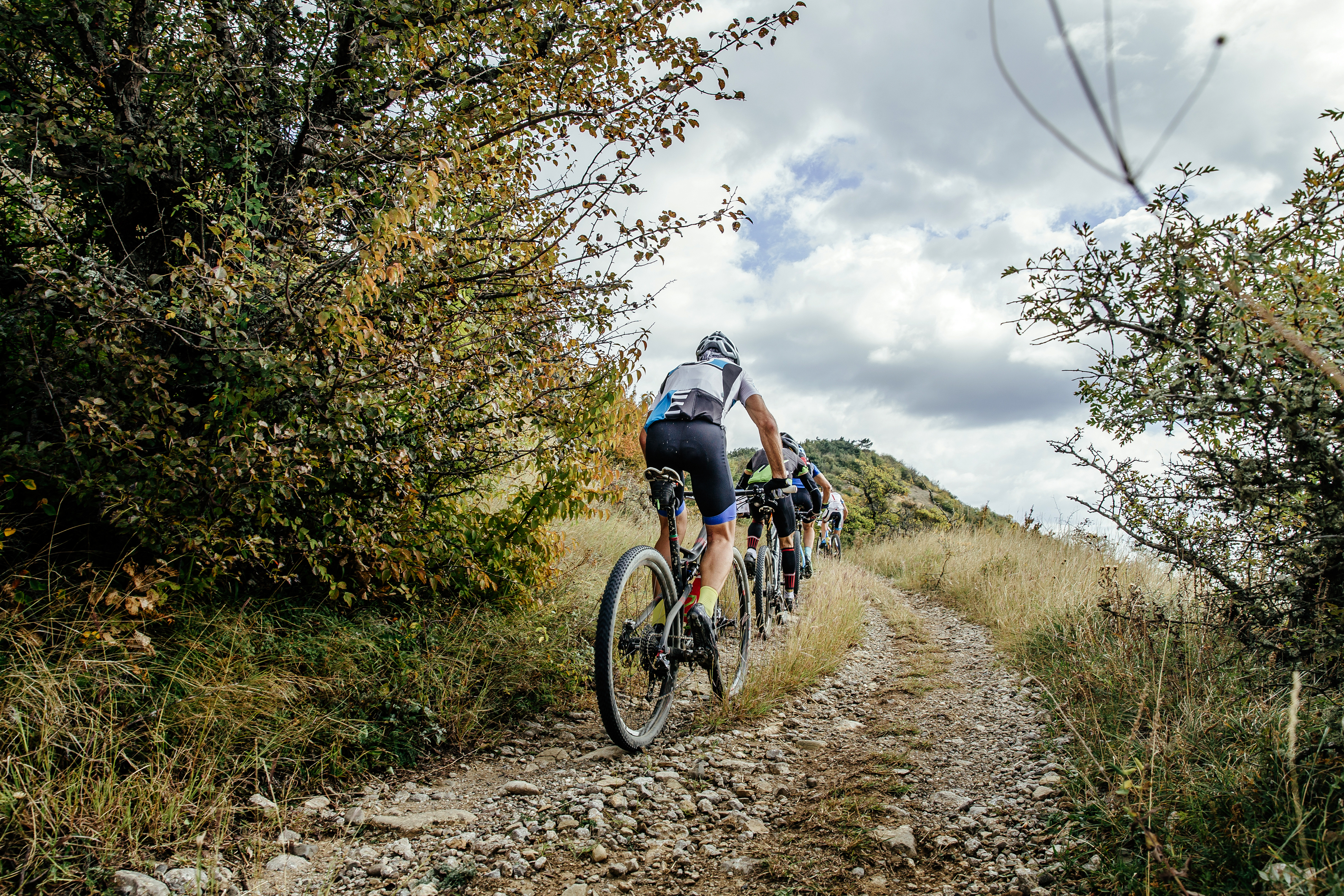
For those who like a mix of thrill and adventure, cross country is where you’ll find it. It’s the most common form of mountain biking, involving off-roading through a variety of terrain. Trails incorporate long climbs and flowing descents, and sometimes you’ll come across more technical features like rock gardens. In the same run, you can move from open fields and paved parks to rough forest roads and snaking singletracks. But wherever XC takes you, you’ll need the endurance to survive extended sessions in the saddle.
The discipline is more challenging when it gets competitive. Cross country racing is the only form of mountain biking in the Olympics. At these levels, swift riding and smooth handling are crucial, so XC bikes are the lightest, nimblest bikes on the trail. For starters, you may want to pick up a hardtail and then progress to a full suspension bike.
TRAIL RIDING
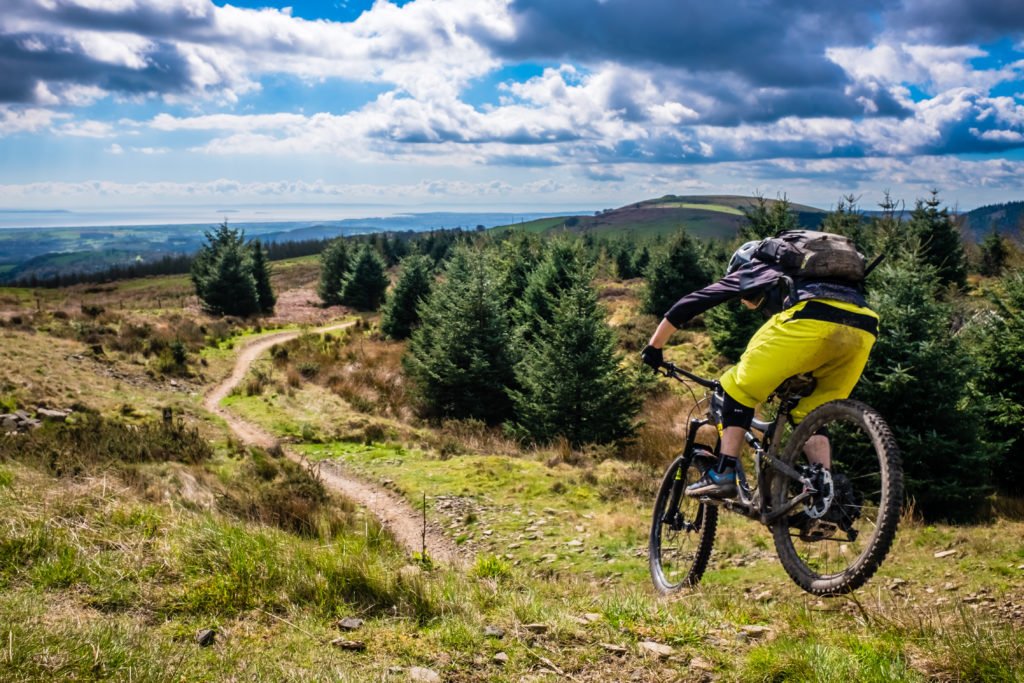
Trail riding is XC’s more aggressive cousin. Although the two mountain biking disciplines are similar, this style focuses on rugged singletracks. Like cross country, trail riding covers a range of terrain, but it can present bigger obstacles. When hitting the ol’ dusty trail, expect a challenging mix of climbing, descending and technical features.
As for the ride, these bikes sport strong wheels and tyres to take extra punishment. Ultra responsive breaks and wider handlebars give you control at short notice. If you have to choose, full suspension provides more comfort, but a hardtail will be more efficient at climbing.
ALL MOUNTAIN (AM)
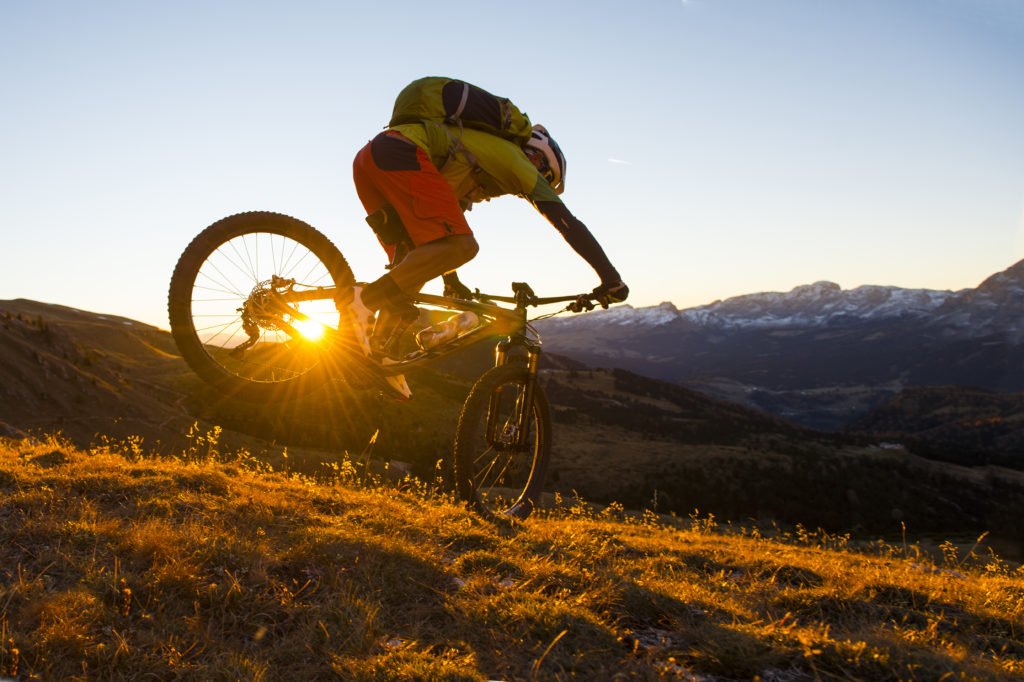
100% pure mountain riding – this discipline entails overcoming extreme natural obstacles. AM trails get the adrenaline pumping with big jumps, daring drops and other challenges you’d expect from a mountain.
And that means you’ll need a bike that can handle mountain-sized demands. A hardtail with a generous amount of travel (at least 6 inches) is a safe bet. We also recommend a lightweight frame, sturdy wheels and puncture-proof tyres to roll over any hurdle that comes your way. When going all mountain, extra armour is advised, including a more protective helmet, knee pads and elbow pads.
DOWNHILL
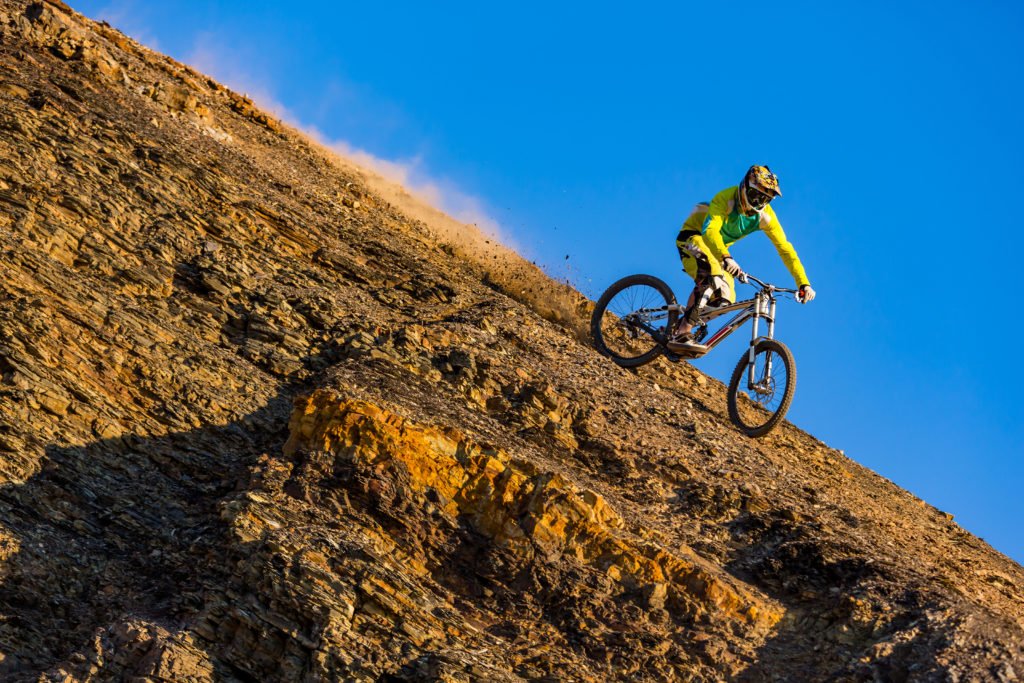
In downhill mountain biking, gravity reigns supreme. Riders will walk or drive up a trail or catch a ride to the top on a lift system. Then there’s only one way to go. Unlike cross country trails that involve winding paths, downhill trails are designed to plummet riders straight down the mountain as fast as possible. The goal here is blazing speed, and you’ll need lots of it when committing to steep descents, massive gaps and huge jumps.
Downhill bikes are built burly with chunkier tyres for extra grip and control. They feature full suspension setups with 7–9 inches of travel to glide over gnarly rocks and tree roots, along with fewer gears for added clearance. Before you drop in, you’d be wise to wear a full-face helmet, eye goggles, body plates and additional protection.
ENDURO
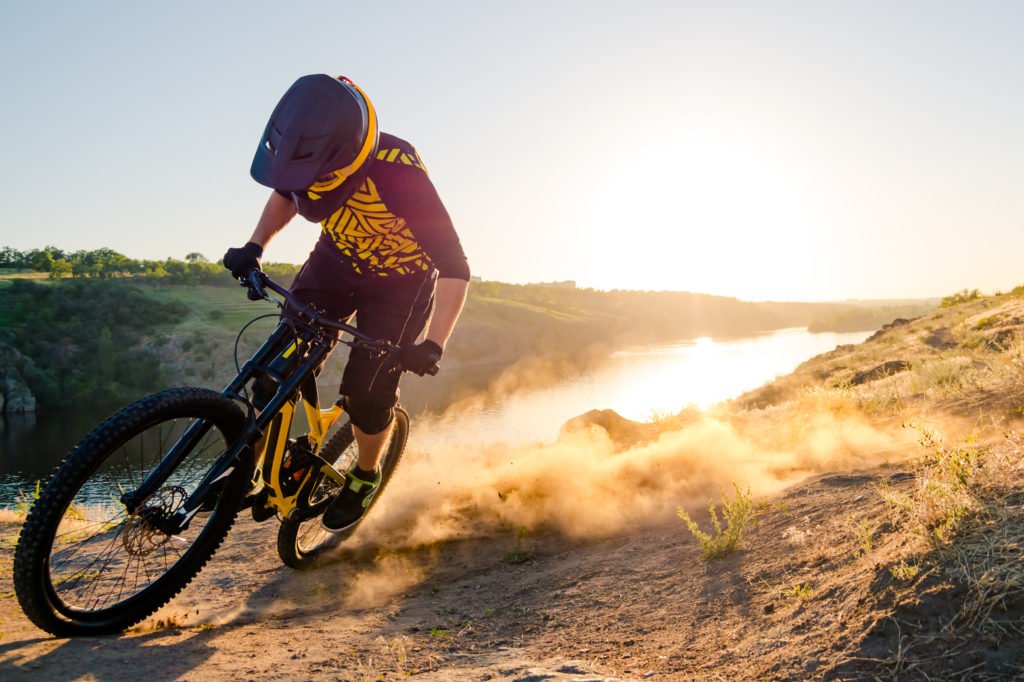
Of all the mountain biking disciplines, enduro is the most multifaceted, blending the physical endurance of XC, the steel nerves of downhill and the power to climb. And it all revolves around racing. In most events, there are 3–6 timed stages of combined climbing and descending, but some, like Ard Rock in Yorkshire, have even more. Neutral transfer stages must be completed within a time limit but are not part of accumulated time. Each race has its own rules and requires different skills, which always makes enduro a fun and inspiring mountain biking discipline.
In any case, enduro bikes can handle the most challenging range of terrain. They’re usually full suspension and have long travel, allowing you to take bumps and jumps with confidence. Always wear a helmet with deep coverage and goggles, especially when racing or hitting high-speeds on Alpine descents.
FREERIDING
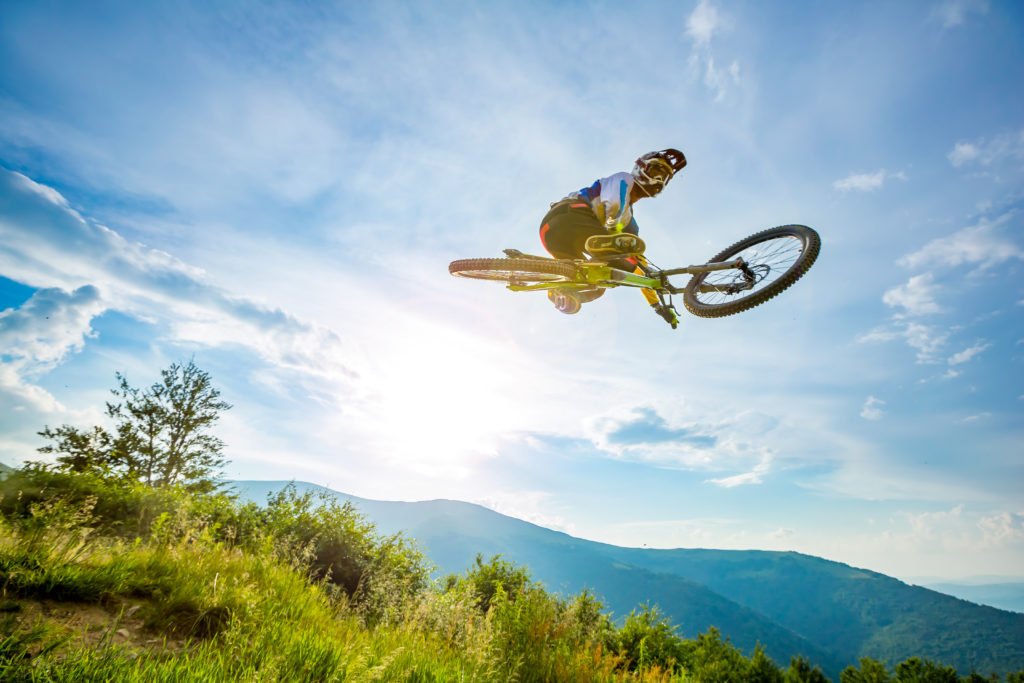
Freeriding is fast becoming one of the most popular mountain biking disciplines. It’s closely related to downhill but highlights technical trail features and the art of tricks. Different types of trails emphasise challenging natural areas dotted with dirt jumps, ramps, ladders and beams.
As the name suggests, freeriding doesn’t have too many rules. It’s all about creativity, and riders show off different skills to flow from one obstacle to the next. Modern freeride bikes are like downhill bikes but are lighter and have slightly less suspension. The added stability alllows them to be ridden over technical sections with ease. Most have shorter wheelbases and other geometry tweaks to help you manoeuvre and perform stylish stunts.
There’s much more to MTB than that, but we’ve covered a fair bit. Agree with our guide? Disagree? Either way, let us know how you like to ride.
And if you’re up for an adventure, check out our picks of the best mountain bike holiday destinations in Europe.
Dont forget, with mountain biking, sometimes thrills come with spills. Our mountain bike policies offer coverage for accidental damage, even if it’s from a crash, and theft from vehicles.
Learn more about our mountain bike insurance and mountain bike travel insurance.